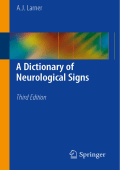This is a list of typefaces shipped with Windows 3.1x through Windows 10. Typefaces only shipped with Microsoft Office or other Microsoft applications are not included. The 'First Windows version' column indicates the first edition of Windows in which the font was included.
Calibri does not contain Chinese characters. When you set your font to Calibri, Microsoft Office automatically choose a Chinese font for Chinese you’ve entered. In your case, it seems that Excel automatically chose Microsoft Yahei (微软雅黑), while Powerpoint automatically chose STXinwei (华文新魏). They are both correct behaviors. In Excel, people expect to see more general fonts in sheets, while, in PowerPoint, people expect to see more stylish fonts in presentations.
Though what PowerPoint did is correct, if you do want to change the font in PowerPoint, you have to keep in mind that Calibri does not contain Chinese characters. Therefore, you have to choose another Chinese font for it so that the appearance would change.
 Initially, the organization aimed at gathering comprehensive info on a broad variety of gambling aspects across Canada, and the result of the effort was the release of the gambling digest, now published annually. A large cohort of non-profit establishments, gambling providers and regulators united their efforts towards transparent and responsible gambling in Canada within the framework of CPRG, or the Canadian Partnership for Responsible Gambling. / 18 Oct-2016 Online Casino Canada: Responsible Gambling The year of 2004 heralded the era of new attitude towards gambling organization and virtually all the stakeholders involved in gambling activities.
Initially, the organization aimed at gathering comprehensive info on a broad variety of gambling aspects across Canada, and the result of the effort was the release of the gambling digest, now published annually. A large cohort of non-profit establishments, gambling providers and regulators united their efforts towards transparent and responsible gambling in Canada within the framework of CPRG, or the Canadian Partnership for Responsible Gambling. / 18 Oct-2016 Online Casino Canada: Responsible Gambling The year of 2004 heralded the era of new attitude towards gambling organization and virtually all the stakeholders involved in gambling activities.
I personally recommend Microsoft Yahei (the font Excel uses) and STZhongsong (a very bold serif font suitable for presentation titles).
I've set up Microsoft Chinese Input on Windows 7. I've noticed that whenever I enter characters, they appear in a muddy looking font with random line thicknesses, making the characters pretty illegible. Selecting the characters and manually changing the font to 'SimHei' or 'SimSun' makes the characters readable. The selected illegible characters just list my default font, 'Times New Roman,' so I'm not sure what system Chinese font I'm actually getting.
I'd gladly delete it. I've found a way to change the default system font for Chinese characters in earlier versions of Windows (edit a registry key under 'GDI?'

), but I don't have this registry setting in Windows 7. Has anyone else successfully set up SimSun or another font as the default font whenever typing Chinese Characters on Windows 7? Anyone else having this same problem? Here's how I fixed this error in Writer: First I adjusted language settings in OpenOffice Writer: 1) Tools -> Options -> Language Settings -> Languages. A) Check 'Enabled for Asian Languages,' B) Select 'Chinese (simplified) from the drop down.

At this point, the problem was not quite fixed, I still saw a few character blobs. I went back to options and found one more important setting. 2) Tools -> Options -> OpenOffice.org Writer -> Basic Fonts (Asian) a) Set 'SimSun' as default font, B) Set 'SimHei' at 14pt as heading font.
The previous default was 'Lucida Sans Unicode,' which might have some weird kerning or encoding problems in OOo. Characters often collided, becoming illegible. I'm not entirely sure why my defaults were not correctly set to SimSun and SimHei.
Perhaps this is because I installed OpenOffice before correcting my system wide language settings.